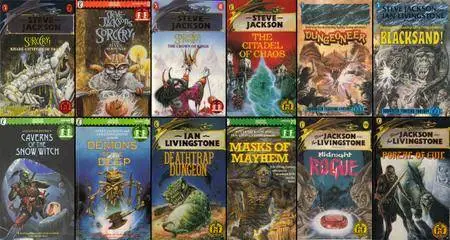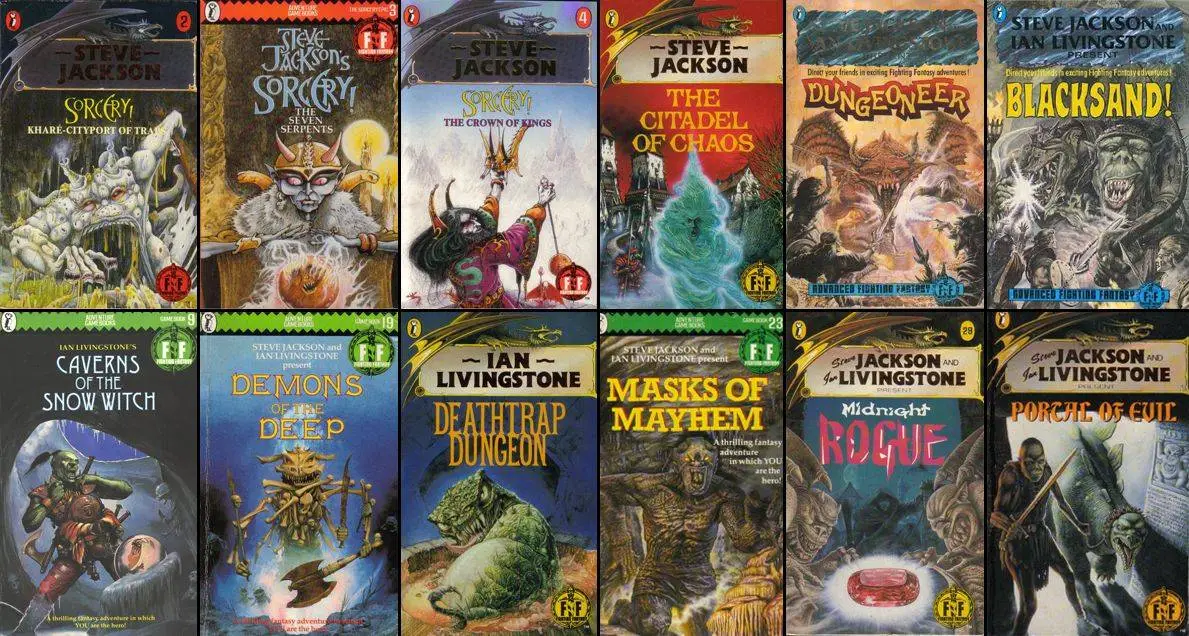Ian Livingstone and Steve Jackson, "Fighting Fantasy Books Collection (1982-2007)"
English | ISBN: N/A | 63 PDF | 517.25 MB
English | ISBN: N/A | 63 PDF | 517.25 MB
Fighting Fantasy is a series of single-player role-playing gamebooks created by Steve Jackson and Ian Livingstone. The first volume in the series was published by Puffin in 1982, with the rights to the series eventually being purchased by Wizard Books in 2002. The series distinguished itself by mixing Choose Your Own Adventure-style storytelling with a dice-based role-playing element, the caption on many of the covers claiming each title was an adventure "in which YOU are the hero!"
The text of a Fighting Fantasy gamebook never progresses in a linear fashion, but rather is divided into a series of numbered sections (usually 400, though a few are shorter or longer). Beginning at the first section, the reader typically must pick one of a series of options provided by the text, each with a non-sequential numbered section (e.g. turning from Section 1 directly to either Section 83 or Section 180) which in turn provides an outcome for the option chosen. The story continues in this fashion, the player continuing to pick other numbered sections, until their character is stopped by the story or killed in combat, or completes the quest. The books also feature a system whereby the protagonist is randomly assigned scores in three statistics (named Skill, Stamina, and Luck) which, in conjunction with the player rolling a six-sided die, are used to resolve skill challenges and the combat sections. Some titles use additional statistics or conflict resolution mechanics. A typical Fighting Fantasy gamebook tasks players with completing a quest, with players then making choices in an attempt to successfully finish the adventure. A successful play usually ends with the player reaching the final numbered section of the book. In some cases this can only be achieved by obtaining various story items (e.g. gems in Deathtrap Dungeon) many of the titles only feature one path to the solution.



